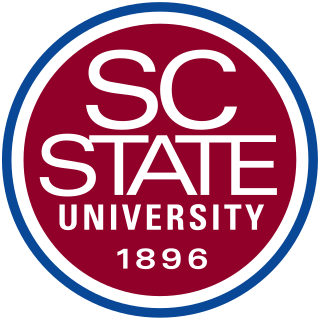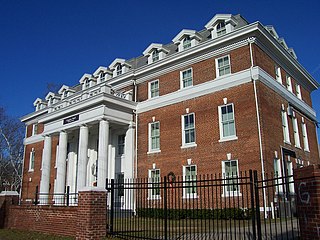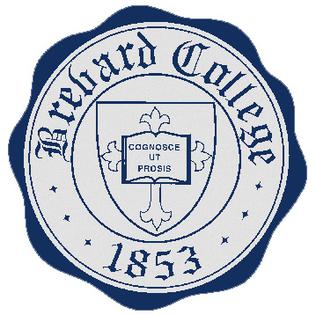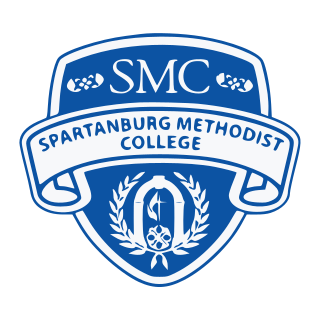
The Central Intercollegiate Athletic Association (CIAA) is a college athletic conference affiliated with the National Collegiate Athletic Association (NCAA) at the Division II level, whose member institutions consist entirely of historically black colleges and universities (HBCUs).

The Southern Intercollegiate Athletic Conference (SIAC) is a college athletic conference affiliated with the National Collegiate Athletic Association (NCAA) at the Division II level. Formed in 1913, it consists mostly of historically black colleges and universities (HBCUs), with all but one member located in the Southern United States.

Orangeburg, also known as The Garden City, is the principal city in and the county seat of Orangeburg County, South Carolina, United States. The population of the city was 13,964 according to the 2020 census. The city is located 37 miles southeast of Columbia, on the north fork of the Edisto River.

South Carolina State University is a public, historically black, land-grant university in Orangeburg, South Carolina. It is the only public, historically black land-grant institution in South Carolina, is a member-school of the Thurgood Marshall College Fund, and is accredited by the Southern Association of Colleges and Schools (SACS).

William Claflin was an American politician, industrialist, and philanthropist from Massachusetts. He served as the 27th governor of Massachusetts from 1869 to 1872 and as a member of the United States Congress from 1877 to 1881. He also served as chairman of the Republican National Committee from 1868 to 1872, serving as a moderating force between the Radical and moderate wings of the Republican Party. His name is given to Claflin University in South Carolina, a historically black college founded with funding from him and his father.

Benedict College is a private historically black college in Columbia, South Carolina. Founded in 1870 by northern Baptists, it was originally a teachers' college. It has since expanded to offer majors in many disciplines across the liberal arts. The campus includes buildings in the Benedict College Historic District, a historic area listed on the National Register of Historic Places.

Allen University is a private historically black university in Columbia, South Carolina. It has more than 600 students and still serves a predominantly Black constituency. The campus is listed on the National Register of Historic Places as Allen University Historic District.

Brevard College is a private college in Brevard, North Carolina. The college grants the Bachelor of Arts. Bachelor of Science, and Master of Science degrees.

Kentucky Christian University (KCU) is a private Christian university in Grayson, Kentucky. It was founded on December 1, 1919, as Christian Normal Institute, by J. W. Lusby and J. O. Snodgrass. As a "normal school" its programs included a high school, a junior college, and a training program for public school teachers. During the early 1920s its emphasis shifted to educating students for the Christian ministry. Degree programs are offered in six schools within the university: the Sack School of Bible and Ministry, the School of Business, the Keeran School of Education, the School of Distance and General Education, the Yancey School of Nursing, and the School of Social Work and Human Services.
Voorhees University is a private historically black university in Denmark, South Carolina. It is affiliated with the Episcopal Church and accredited by the Southern Association of Colleges and Schools.

Spartanburg Methodist College (SMC) is a private Methodist college in Saxon, South Carolina. The college is affiliated with the United Methodist Church and has approximately 1,000 students.

The Charleston Cougars are the varsity intercollegiate athletic teams representing the College of Charleston in Charleston, South Carolina. The Cougars compete in NCAA Division I and are currently members of the Coastal Athletic Association. The university sponsors 20 varsity sports teams including men and women's basketball, cross country, golf, soccer and tennis; women's-only dance team, equestrian, beach volleyball, softball, track and field and volleyball; men's-only baseball; and co-ed sailing and cheerleading. The university's most successful sports are co-ed sailing, which has won 14 national championships since 1986, women's volleyball, which has qualified for the NCAA Tournament seven times since 2002 and men's baseball, which has qualified for the NCAA Tournament seven times since 2004.

Henry E. Hayne was a politician in South Carolina during the Reconstruction era. Born into slavery, he served in the South Carolina Senate and as Secretary of State of South Carolina in the 1870s. In 1873, he became the first student of color at the University of South Carolina medical school.
Gloria Blackwell, also known as Gloria Rackley, was an African-American civil rights activist and educator. She was at the center of the Civil Rights Movement in Orangeburg, South Carolina during the 1960s, attracting some national attention and a visit by Dr. Martin Luther King of the Southern Christian Leadership Conference. Her activities were widely covered by the local press.
The Southeastern Athletic Conference (SEAC) was an intercollegiate athletic conference of historically black colleges and universities (HBCUs) that existed from 1929 to 1965. It was known as the South Atlantic Intercollegiate Athletic Association between 1929 and 1942. The conference's members were located in Florida, Georgia, and South Carolina.
William McNeil "Big Bill" Bell Sr. was an American college football player and coach and athletics administrator. He served as the head football coach at Claflin University in Orangeburg, South Carolina from 1934 to 1935, Florida A&M University from 1936 to 1942, and North Carolina A&T State University from 1946 to 1956.
William Wilson Cooke (1871–1949) was an American architect. He worked in the Office of the Supervising Architect of the United States Department of the Treasury and was the first African American man to be employed there. Cooke was the first African American to obtain an architect’s license in the state of Indiana in 1929. He designed many buildings for Claflin College, the Cookman Institute, and the United States Postal Service. Early in his career he worked as a school official.
Robert Charles Bates, was an American architect, educator, and textbook author. He was an African American architect and helped design and build many of the Claflin University campus buildings, a historically black university (HBU) in South Carolina. He is thought to be the first Black teacher of architecture at a HBU; and the first African American author of an architecture textbook.
Henry Nehemiah Tisdale is an American retired academic administrator, educator, and mathematician. He served as the 8th president of Claflin University, a historically black university in Orangeburg, South Carolina from 1994 to 2019.
















